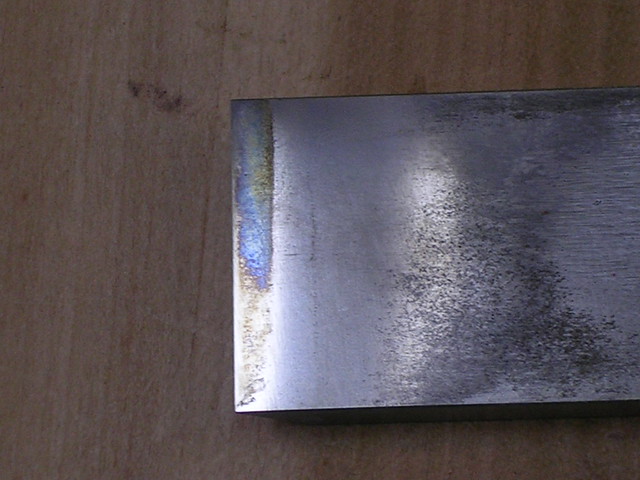jorgoz
Established Member
I recently noticed the edges of a couple of O1 plane blades turning blue during planing. Is this normal ?
The one pictured was mainly used on soft maple and walnut. I rarely plane exotics. I also have the impession the edge retention is quite low, haven't recorded exact time but a guestimate would be about 10 minutes actual use. I never use a power grinder to grind plane blades, if i do i use a tormek, so no heating problems there. Sharpening sequence : king 800, cerax 3000 and naniwa 8000, all flattened with a well used atoma 400 (so i presume it's more going towards 600).
Back of blade

The one pictured was mainly used on soft maple and walnut. I rarely plane exotics. I also have the impession the edge retention is quite low, haven't recorded exact time but a guestimate would be about 10 minutes actual use. I never use a power grinder to grind plane blades, if i do i use a tormek, so no heating problems there. Sharpening sequence : king 800, cerax 3000 and naniwa 8000, all flattened with a well used atoma 400 (so i presume it's more going towards 600).
Back of blade





